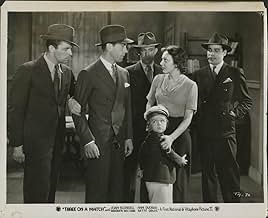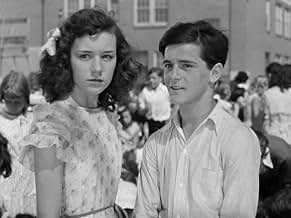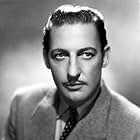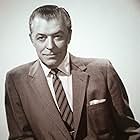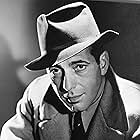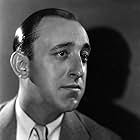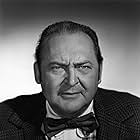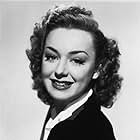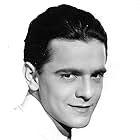IMDb RATING
7.1/10
4.5K
YOUR RATING
Although Vivian Revere is seemingly the most successful of a trio of reunited schoolmates, she throws it away by descending into a life of debauchery and drugs.Although Vivian Revere is seemingly the most successful of a trio of reunited schoolmates, she throws it away by descending into a life of debauchery and drugs.Although Vivian Revere is seemingly the most successful of a trio of reunited schoolmates, she throws it away by descending into a life of debauchery and drugs.
Anne Shirley
- Vivian Revere as a Child
- (as Dawn O'Day)
Herman Bing
- Prof. Irving Finklestein
- (uncredited)
Clara Blandick
- Mrs. Keaton
- (uncredited)
Dick Brandon
- Horace
- (uncredited)
Ann Brody
- Mrs. Goldberg
- (uncredited)
Spencer Charters
- Street Cleaner
- (uncredited)
Frankie Darro
- Bobby
- (uncredited)
- Director
- Writers
- All cast & crew
- Production, box office & more at IMDbPro
Storyline
Did you know
- TriviaFirst film released where Humphrey Bogart plays a hoodlum.
- GoofsThe PS 62 "School Messenger" paper shown in the 1921 montage zooms in to highlight the "School Topic" about Prof. Irving Finklestein rehearsing the orchestra "for its debut at COMMMENCEMENT." While this item is completely logical and sets up the next scene, the other "stories" in the paper are just random lines of text. Under "BANQUET PALANNED", the story starts, "Mrs. Armstrong ended her life in is said to be at a high pitch as the land avenue ..." and the first item under "School Topics" begins, "A small crowd, said to be made several minutes. She alternately body, self-appointed head of her and horror...". Finally, under "Varied Events on Social Program" the text states, "This year, however, officials of Monson, will drive an ancient stage coach through the house. She died instantly send heartiest greetings and wishers.." There are similar occurrences, though not as noticeable, in other years' newspaper montages.
- Quotes
Mary Keaton, aka Mary Bernard: You're a fool, Vivian. Take it from someone who's been one.
- ConnectionsEdited from The Public Enemy (1931)
Featured review
THREE ON A MATCH (First National Pictures, 1932), directed by Mervyn LeRoy, is a realistic account into the lives of three former classmates who meet again as adults, and how one of the three goes through her path of self destruction.
The story begins in 1919 where the song, "Smiles" is on top of the charts. Jack Dempsey wins his championship title by knocking out Jess Willard, and the advent of the Prohibition era. Three girls, Mary (Virginia Davis), Vivian (Dawn O'Day) and Ruth (Betty Carrs) are students at Public School 62. Mary is a wild girl who cuts class to smoke "cigarettes"; Ruth is a studious girl with the highest grades in her class; and Vivian is a snob voted the most popular girl in her class. Next segment: 1921, Warren G. Harding is elected as president of the United States with his campaign slogan, "the era of good feeling." The girls graduate and go on their separate ways, with the troublesome Mary, who will face her future serving time in reform school. 1925 starts with the underscoring of "The Prison Song," the debut of True Facts Magazine, and of how the youth of today has gone wild. The former classmates, now adults, are focused to what they are currently doing: Mary (Joan Blondell), serving time for grand larceny in a reform school; Vivian (Ann Dvorak), attending an exclusive school, and reading bedtime stories to youngsters; and Ruth (Bette Davis), in secretarial school. Next segment, 1930, with "Dancing With Tears in My Eyes" heading the musical charts. Mary Keaton, a struggling actress using Mary Bernard as her stage name, is reunited with Vivian, now married to a successful attorney, Robert Kirkwood (Warren William), and mother to a little boy, Junior (Buster Phelps). Although Vivian has everything to live for, she's unhappy, in fact, just plain bored. As for Ruth, she's a secretary with ambition. Upon their reunion in a restaurant, they talk over old times, light up their cigarettes from a single match and laugh off the superstition, "Three on a Match," where the third member to use the match is to become the unlucky one. Later, while on an ocean cruise alone with Junior, Vivian meets Mike Loftus (Lyle Talbot), a compulsive gambler whom she's immediately attracted. After going with this loser, she finds her new existence and illicit affair exciting, until realizing that too much partying, liquor and cigarettes is ruining her life as well as Junior's. Following a brief segment of 1931, the chapter concludes in 1932, showing what happens to the "three on a match."
Whenever THREE ON A MATCH is shown on television (presently on Turner Classic Movies) it plays as a Bette Davis movie, even though she's the one with limited screen time, least dialog and smoking scenes. Joan Blondell, the leading member of the trio, is good in her role, but it's Ann Dvorak giving a standout performance, in what's considered by many to be her best screen role. Of the trio, it's Bette Davis who worked herself to becoming the "Queen of Warner Brothers" before the end of the decade. As for Blondell, she's as memorable as Dvorak is underrated. Warren William, then groomed to stardom, is also given little screen opportunity in this production. This was to be his first of five films opposite Joan Blondell, and their combination together works quite well on screen. Betty Carrs, the child actress appearing as Ruth in the early portion of the story, has a striking resemblance to Bette Davis, giving the basic idea as to how Bette Davis herself looked during her childhood years; Dawn O'Day would later become known as Anne Shirley, leading adolescent actress for RKO Radio in the 1930s and early 1940s.; and Virginia Davis, the least known of the three, once known as the the live action character of Alice in cartoon shorts for Walt Disney in the 1920s.
With limited actors listed in the opening credits, there are many familiar faces from the Warners stock company to go around: Glenda Farrell (The reform school inmate); Grant Mitchell (The school principal); Clara Blandick (Mary's mother); Frankie Darro (Bobby); Hardie Albright (Philip Randall, Kirkwood's lawyer assistant); and Sidney Miller (Willie Goldberg). Allen Jenkins, Humphrey Bogart (in gangster debut) and Jack LaRue play the meanest looking thugs in screen history, with Edward Arnold as "Ace," their leader, who's introduced late in the story in front of the mirror pulling hairs from his nose with the tweezers.
Like most Warner Brothers Depression-era dramas of the 1930s, THREE ON A MATCH plays on the grim side. No nonsense, no glamor, heavy on melodrama and a touch of "film noir." Even Blondell and Dvorak play their own down-on-their luck characters in separate scenes without the use of makeup. It's quite grim, especially with a "too-close- for- comfort" scene involving child abduction. All in all, as depressing as it can be, it's quite watchable, particularly since it's a very short 63 minute production that plays like a novel with very short chapters. There's great moments of nostalgia, especially with it's newsreel-type opening of events that occurred during any given specific era of time giving this an added plus.
THREE ON A MATCH is also available on video cassette as part of the "FORBIDDEN Hollywood" series, hosted by respected film critic, Leonard Maltin. Over the years, THREE ON A MATCH has developed into a minor classic from the 1930s. It was remade by Warner Brothers in 1938 as Broadway MUSKETEERS with Ann Sheridan, Margaret Lindsay and Marie Wilson in the Blondell, Dvorak and Davis roles, with a little girl, Janet Chapman, filling in the role as the doomed girl's child. The original ranks the best and stronger of the two. They can both be seen and compared on Turner Classic Movies. (*** matches)
The story begins in 1919 where the song, "Smiles" is on top of the charts. Jack Dempsey wins his championship title by knocking out Jess Willard, and the advent of the Prohibition era. Three girls, Mary (Virginia Davis), Vivian (Dawn O'Day) and Ruth (Betty Carrs) are students at Public School 62. Mary is a wild girl who cuts class to smoke "cigarettes"; Ruth is a studious girl with the highest grades in her class; and Vivian is a snob voted the most popular girl in her class. Next segment: 1921, Warren G. Harding is elected as president of the United States with his campaign slogan, "the era of good feeling." The girls graduate and go on their separate ways, with the troublesome Mary, who will face her future serving time in reform school. 1925 starts with the underscoring of "The Prison Song," the debut of True Facts Magazine, and of how the youth of today has gone wild. The former classmates, now adults, are focused to what they are currently doing: Mary (Joan Blondell), serving time for grand larceny in a reform school; Vivian (Ann Dvorak), attending an exclusive school, and reading bedtime stories to youngsters; and Ruth (Bette Davis), in secretarial school. Next segment, 1930, with "Dancing With Tears in My Eyes" heading the musical charts. Mary Keaton, a struggling actress using Mary Bernard as her stage name, is reunited with Vivian, now married to a successful attorney, Robert Kirkwood (Warren William), and mother to a little boy, Junior (Buster Phelps). Although Vivian has everything to live for, she's unhappy, in fact, just plain bored. As for Ruth, she's a secretary with ambition. Upon their reunion in a restaurant, they talk over old times, light up their cigarettes from a single match and laugh off the superstition, "Three on a Match," where the third member to use the match is to become the unlucky one. Later, while on an ocean cruise alone with Junior, Vivian meets Mike Loftus (Lyle Talbot), a compulsive gambler whom she's immediately attracted. After going with this loser, she finds her new existence and illicit affair exciting, until realizing that too much partying, liquor and cigarettes is ruining her life as well as Junior's. Following a brief segment of 1931, the chapter concludes in 1932, showing what happens to the "three on a match."
Whenever THREE ON A MATCH is shown on television (presently on Turner Classic Movies) it plays as a Bette Davis movie, even though she's the one with limited screen time, least dialog and smoking scenes. Joan Blondell, the leading member of the trio, is good in her role, but it's Ann Dvorak giving a standout performance, in what's considered by many to be her best screen role. Of the trio, it's Bette Davis who worked herself to becoming the "Queen of Warner Brothers" before the end of the decade. As for Blondell, she's as memorable as Dvorak is underrated. Warren William, then groomed to stardom, is also given little screen opportunity in this production. This was to be his first of five films opposite Joan Blondell, and their combination together works quite well on screen. Betty Carrs, the child actress appearing as Ruth in the early portion of the story, has a striking resemblance to Bette Davis, giving the basic idea as to how Bette Davis herself looked during her childhood years; Dawn O'Day would later become known as Anne Shirley, leading adolescent actress for RKO Radio in the 1930s and early 1940s.; and Virginia Davis, the least known of the three, once known as the the live action character of Alice in cartoon shorts for Walt Disney in the 1920s.
With limited actors listed in the opening credits, there are many familiar faces from the Warners stock company to go around: Glenda Farrell (The reform school inmate); Grant Mitchell (The school principal); Clara Blandick (Mary's mother); Frankie Darro (Bobby); Hardie Albright (Philip Randall, Kirkwood's lawyer assistant); and Sidney Miller (Willie Goldberg). Allen Jenkins, Humphrey Bogart (in gangster debut) and Jack LaRue play the meanest looking thugs in screen history, with Edward Arnold as "Ace," their leader, who's introduced late in the story in front of the mirror pulling hairs from his nose with the tweezers.
Like most Warner Brothers Depression-era dramas of the 1930s, THREE ON A MATCH plays on the grim side. No nonsense, no glamor, heavy on melodrama and a touch of "film noir." Even Blondell and Dvorak play their own down-on-their luck characters in separate scenes without the use of makeup. It's quite grim, especially with a "too-close- for- comfort" scene involving child abduction. All in all, as depressing as it can be, it's quite watchable, particularly since it's a very short 63 minute production that plays like a novel with very short chapters. There's great moments of nostalgia, especially with it's newsreel-type opening of events that occurred during any given specific era of time giving this an added plus.
THREE ON A MATCH is also available on video cassette as part of the "FORBIDDEN Hollywood" series, hosted by respected film critic, Leonard Maltin. Over the years, THREE ON A MATCH has developed into a minor classic from the 1930s. It was remade by Warner Brothers in 1938 as Broadway MUSKETEERS with Ann Sheridan, Margaret Lindsay and Marie Wilson in the Blondell, Dvorak and Davis roles, with a little girl, Janet Chapman, filling in the role as the doomed girl's child. The original ranks the best and stronger of the two. They can both be seen and compared on Turner Classic Movies. (*** matches)
- How long is Three on a Match?Powered by Alexa
Details
- Release date
- Country of origin
- Language
- Also known as
- 3 on a Match
- Filming locations
- Echo Park Lake, Los Angeles, California, USA(exterior scenes)
- Production company
- See more company credits at IMDbPro
Box office
- Budget
- $444,000 (estimated)
- Runtime1 hour 3 minutes
- Color
- Aspect ratio
- 1.37 : 1
Contribute to this page
Suggest an edit or add missing content





